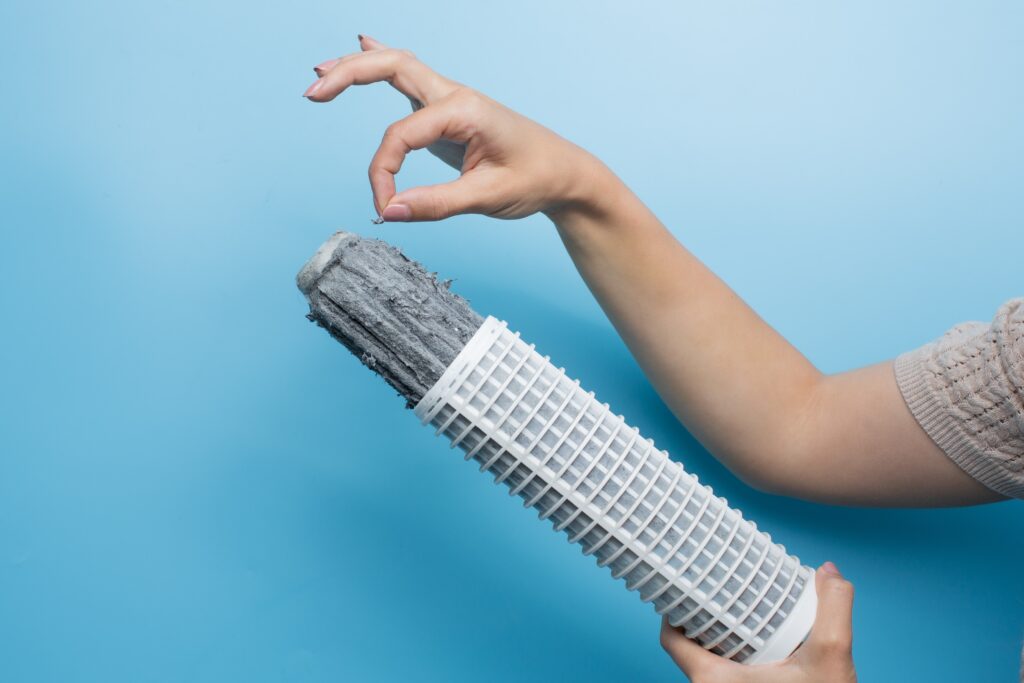In an era marked by technological advancements and innovation, we are constantly surrounded by synthetic materials, many of which have appeared on the surface level to have transformed our lives for the better. However, with these conveniences come unintended consequences. Microfiber pollution is one such hidden danger that is silently wreaking havoc on our environment. Read on, as we delve into the world of microfibers, uncovering the dangers they pose to our ecosystems, and explore possible solutions to mitigate this growing environmental threat.
What Are MicroFibers?
To comprehend the dangers of microfibers, we first need to understand what they are. Microfibers are tiny, thread-like particles that measure less than 5 millimeters in length and are incredibly thin, often measuring less than one denier. They are most commonly found in synthetic textiles, including polyester, nylon, and acrylic. When we wear or wash clothing made from these materials, microfibers are shed into the environment, entering our waterways through washing machines and ultimately making their way into our oceans, rivers, and lakes.
The Pervasive Presence Of Microfibers
Microfibers are everywhere, and they’re almost impossible to escape. They can be found in our clothing, bedding, carpets, upholstery, and even in cleaning materials like microfiber cloths. This widespread use of synthetic materials has inadvertently led to an increase in microfiber pollution, creating an environmental crisis that we are only beginning to understand.
The Dangers of Microfiber Pollution
Now, let’s dive into the specific dangers posed by microfiber pollution to our environment:
1. Water Contamination
The primary pathway for microfibers to enter our ecosystems is through our wastewater systems. Every time we do laundry, thousands of microfibers are released from our clothing and carried away with the wastewater. These microfibers are so small that they easily bypass filtration systems in sewage treatment plants, ending up in our water bodies. Once in the water, they can persist for years, causing harm to aquatic life.
2. Threat to Aquatic Life
Microfibers are ingested by various aquatic organisms, including fish and shellfish. This ingestion can lead to physical harm, reduced feeding efficiency, and even death. The toxins and chemicals present in microfibers can also accumulate in the tissues of these organisms, posing a risk to human health when consumed.
3. Disruption of Ecosystems
The introduction of microfibers into aquatic ecosystems can disrupt the delicate balance of these environments. As microfibers accumulate, they can alter the composition of microbial communities, disrupt food chains, and harm aquatic biodiversity.
4. Long-term Environmental Impact
Keyword: Long-term Environmental Impact
Microfibers do not biodegrade easily. Instead, they persist in the environment for extended periods, accumulating over time. This accumulation can have long-term consequences for the health of our ecosystems and the overall well-being of our planet.
4. The Human Connection
Microfiber pollution isn’t just an issue for the environment; it also has implications for human health:
Contaminated Drinking Water – As microfibers make their way into our water sources, they can end up in our drinking water supplies. While the health effects of consuming microfibers are not fully understood, the potential for contamination raises concerns about the safety of our drinking water.
Airborne Microfibers – Microfibers aren’t confined to water alone. They can become airborne through activities like laundry and the wearing and cleaning of synthetic textiles. Inhaling these airborne particles may have respiratory health implications, especially for individuals with pre-existing respiratory conditions.
- What Can We Do To Help Address the Microfiber Pollution Problem
Now that we’ve explored the dangers of microfiber pollution, it’s essential to discuss potential solutions to mitigate this environmental threat:
- Use Eco-friendly Fabrics – Choose clothing made from natural fibers such as cotton, hemp, and wool. These materials shed fewer microfibers and are biodegradable, reducing their impact on the environment.
- Use Microfiber Filtration Systems – Invest in microfiber filtration systems for washing machines. These filters can capture a significant portion of microfibers released during laundry, preventing them from entering wastewater systems.
- Change Your Washing Practices – Wash synthetic clothing less frequently and in full loads to reduce microfiber shedding. Using a colder, gentler wash cycle can also help minimize the release of microfibers.
- Consider Using Microfiber-catching Bags – Consider using microfiber-catching laundry bags or pouches that capture microfibers released during washing. These bags can be emptied and the collected fibers disposed of properly.
- Supporting Research and Innovation – Support research initiatives that focus on developing more sustainable textiles and technologies for capturing and recycling microfibers. Encourage innovation in textile design to reduce microfiber shedding.
A Call to Action
In conclusion, microfiber pollution is a hidden environmental danger that poses significant risks to our ecosystems, aquatic life, and even human health. While the extent of the problem is daunting, there are steps we can take as individuals and as a society to address this issue. By making informed choices in our clothing purchases, adopting eco-friendly laundry practices, and supporting research and innovation, we can work towards reducing the impact of microfiber pollution and safeguarding our planet for future generations.
It’s imperative that we recognize the dangers of microfiber pollution and take proactive measures to minimize our contribution to this environmental crisis. Our actions today will determine the health of our ecosystems and the well-being of future generations. Together, we can make a difference and ensure a cleaner, healthier planet for all.



